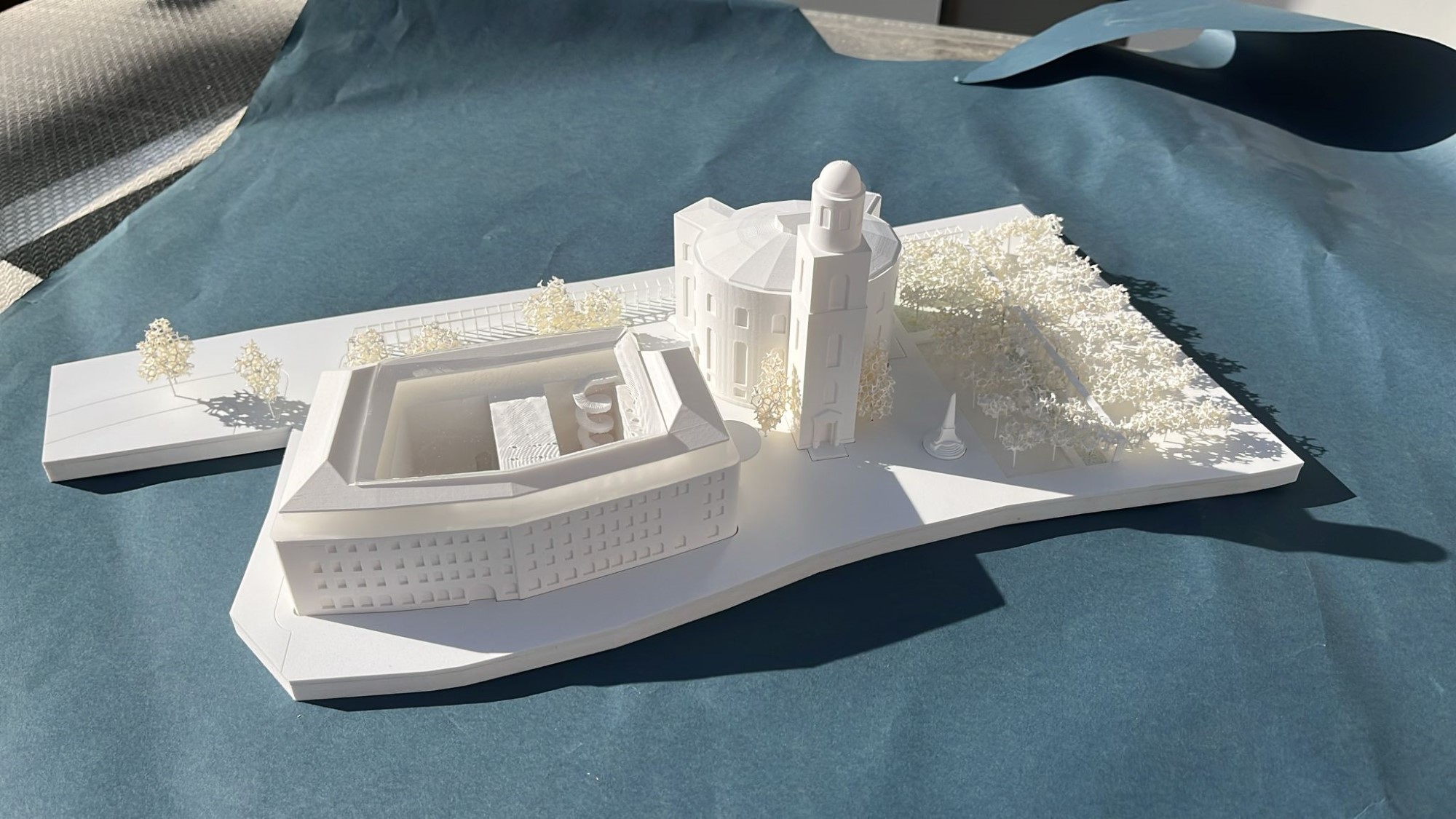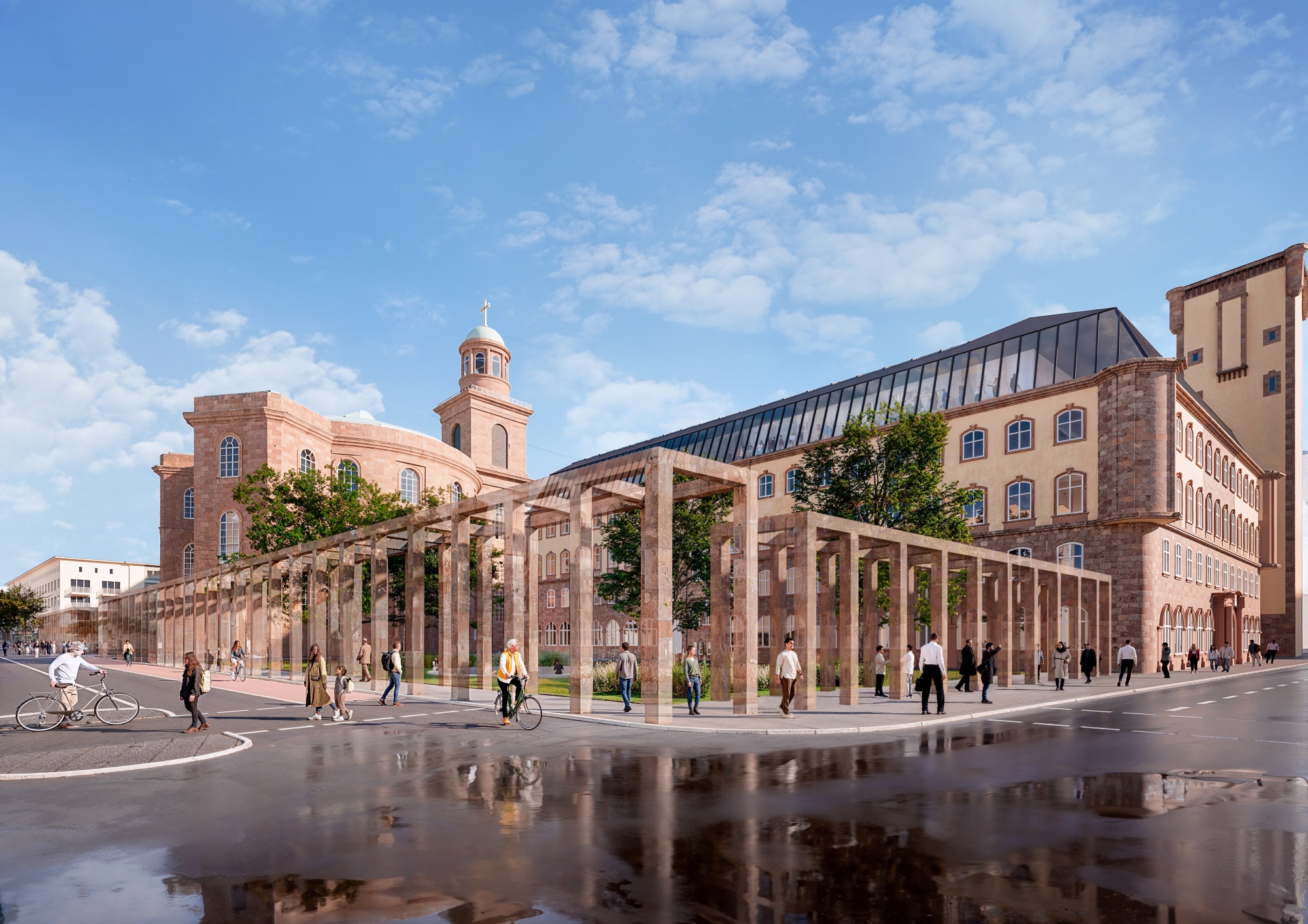
House of Democracy
Open Ideas Competition 2025
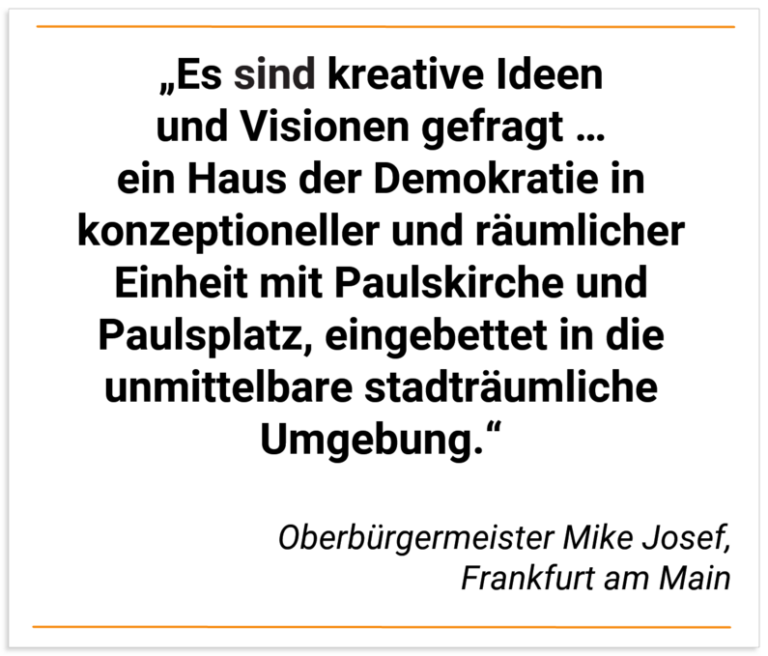
The municipal authorities of Frankfurt am Main invited entries for an open ideas competition in 2025 entitled ‘House of Democracy’. The task set a challenging framework of priority principles and desired uses. The conceptual focus for each design was to be St. Paul’s Church. This applies both to its historical significance and its listed status in the context of Paulsplatz. TEK TO NIK Architects collaborated with DW Dreysse Architects for the competition.
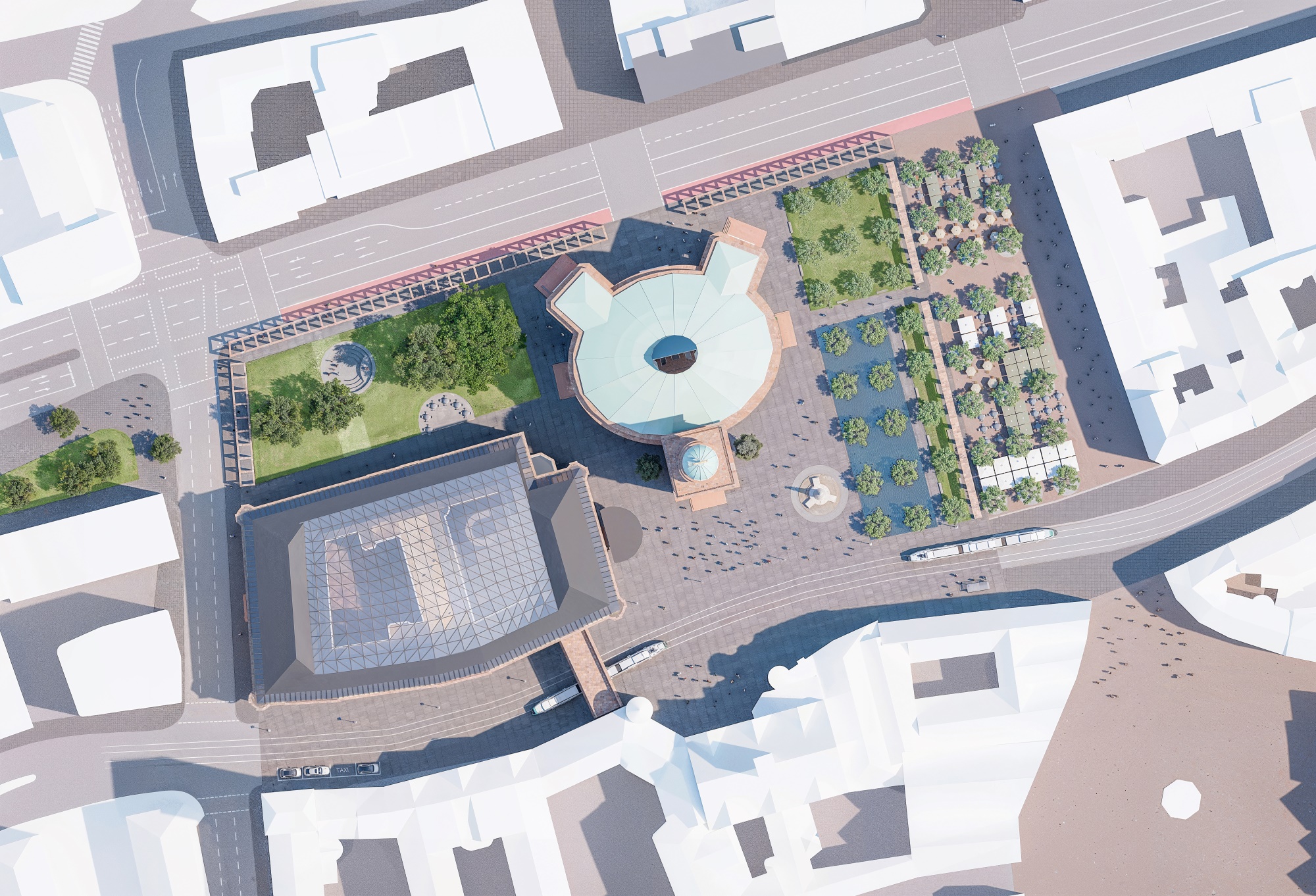
Our starting point was to avoid narrowing Paulsplatz with a new building. Instead, the ‘House of Democracy’ is to be established in the Kämmerei building. In this way, St. Paul’s Church retains its spatial primacy and the surrounding open spaces are preserved. Its affiliation with the ensemble is achieved by a pergola that combines the open spaces into a forum.
The House of Democracy and St. Paul’s Church thus form two buildings that complement each other to create a spatial ensemble. The ensemble can function as a ‘Forum Democraticum’. Citizens come together here for a wide variety of public events and meet as an urban community.
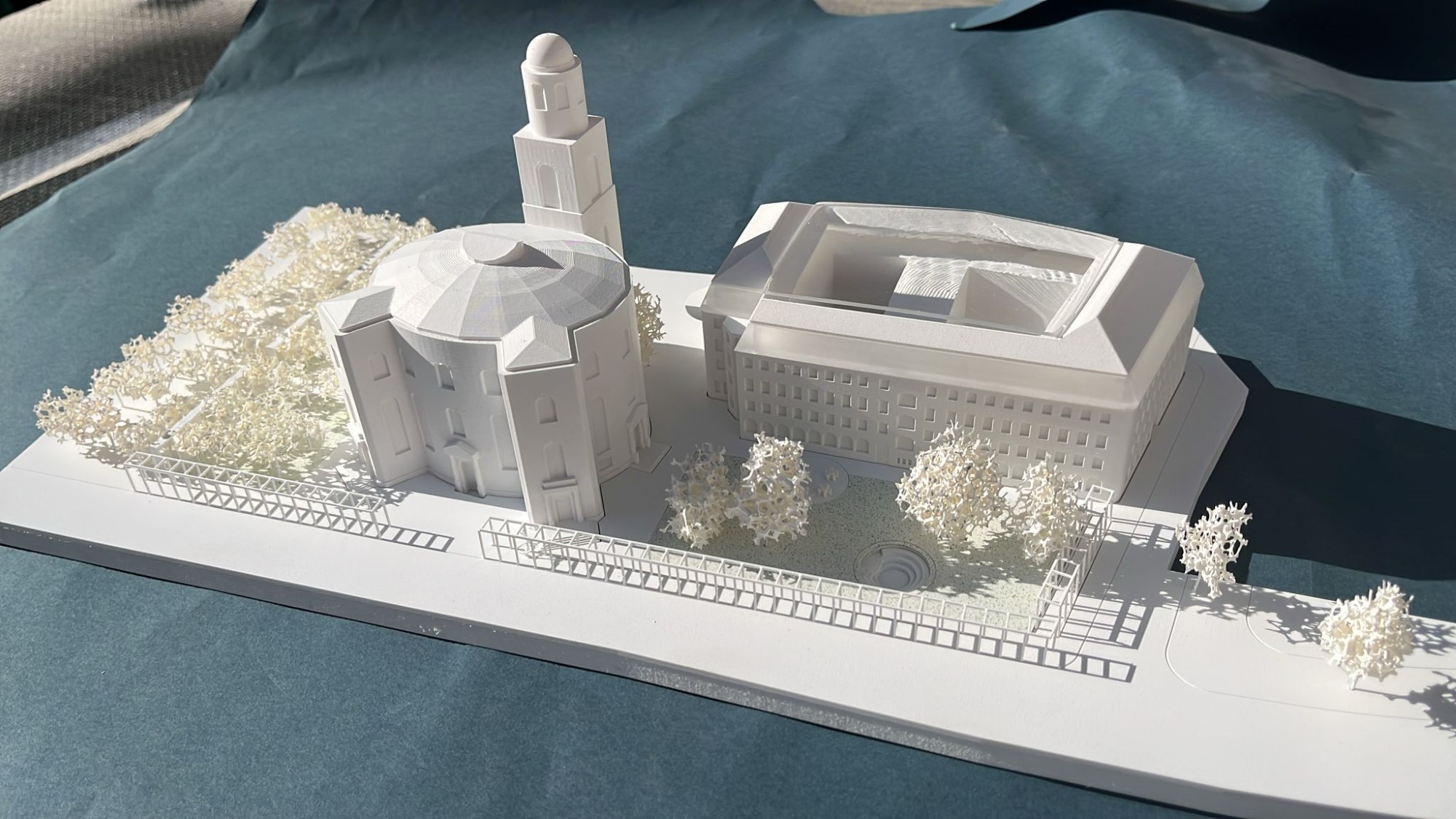
To make the forum stand out spatially in the urban context, it will be enclosed along Berliner Straße with a pergola as a restrained, simple frame made of Main sandstone. The frame is transparent and permeable, protective and connecting.
St. Paul’s Church and the House of Democracy/Treasury should be closely connected to the surrounding open spaces. This is achieved by means of public access via the four existing portals. St. Paul’s Church remains untouched as a solitary building and an important monument to German democratic history.
In the north, the urban space along Sandgasse (formerly Kirchgasse) is focused on the old main entrance, mitigating the rather undignified ‘passing by’ of Berliner Straße.

The treasury building is to be carefully renovated. It offers enough space for the House of Democracy and parts of the treasury. The new attic should restore the historic outline. It will have a glass roof that transforms the two courtyards into interior spaces and provides a large exhibition area on the 4th floor.
The pergola visibly integrates the open spaces next to St. Paul’s Church, remnants of the reconstruction phase, into the ensemble.
The open spaces retain their size and potential for many lively uses. The western area as a garden, the eastern area, Paulsplatz, as a lawn under trees for relaxing, gatherings and the Christmas market. In addition, everyday amenities such as benches, water mirrors and drinking fountains could be installed. The café terraces along the Neue Kräme will be retained.
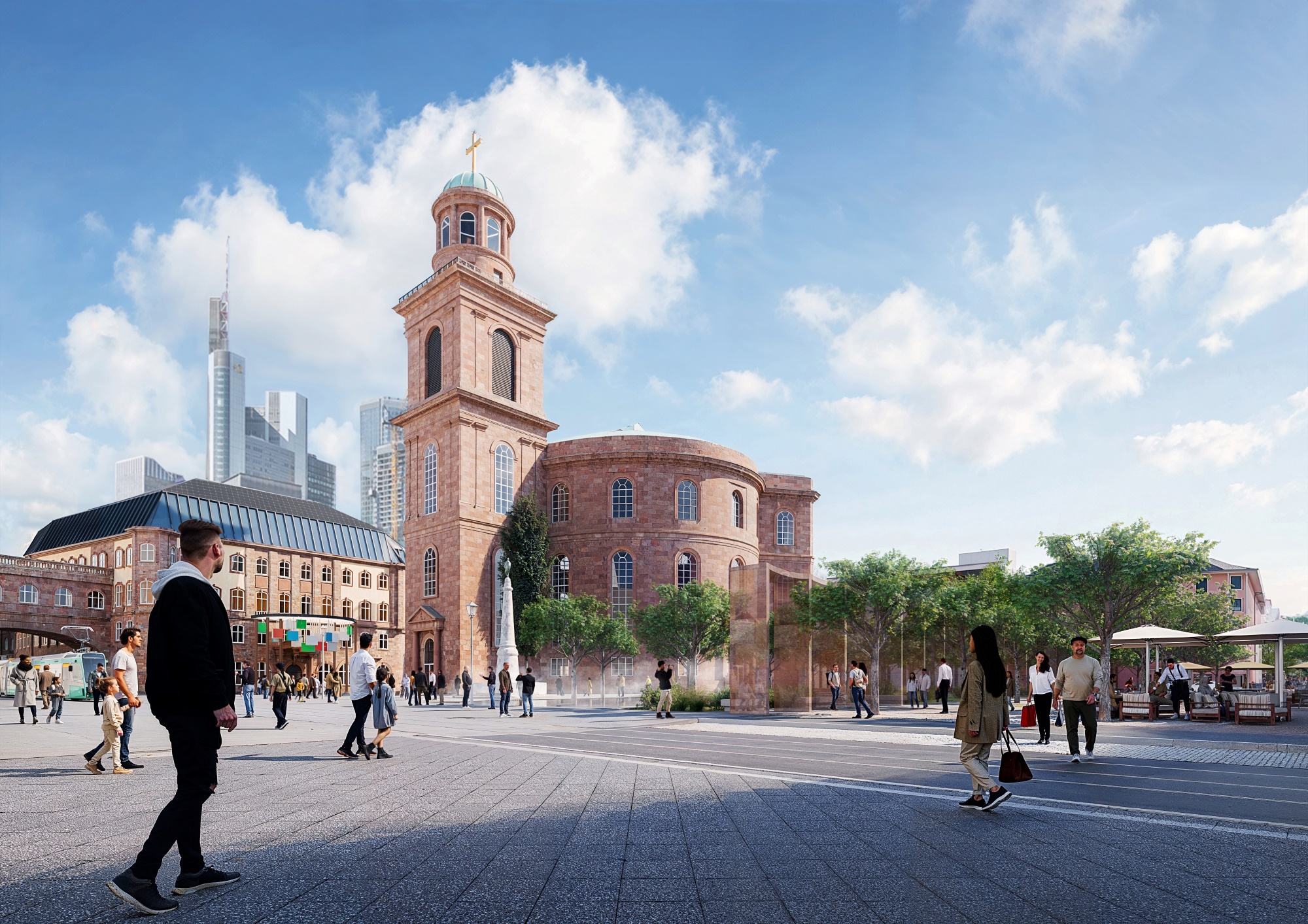
The pergola does not consist of a single Baroque or Classicist form, but rather displays diversity and variation within a fixed spatial grid. It is thus a symbol of pluralistic democracy. The spatial grid refers to the structure of the Basic Law. In addition, civil society groups from all federal states could be nominated to design a section of the pergola according to their own ideas. On Paulsplatz, the pergola is replaced by a ‘row of 19 steles’. The 19 fundamental rights can be read on them.
The project promotes sustainability through the reuse of existing buildings and resource-efficient construction. A photovoltaic system on the roof generates renewable energy. New green spaces and additional trees improve the microclimate and promote biodiversity. The communal open space contributes to social sustainability and a vibrant urban climate.
